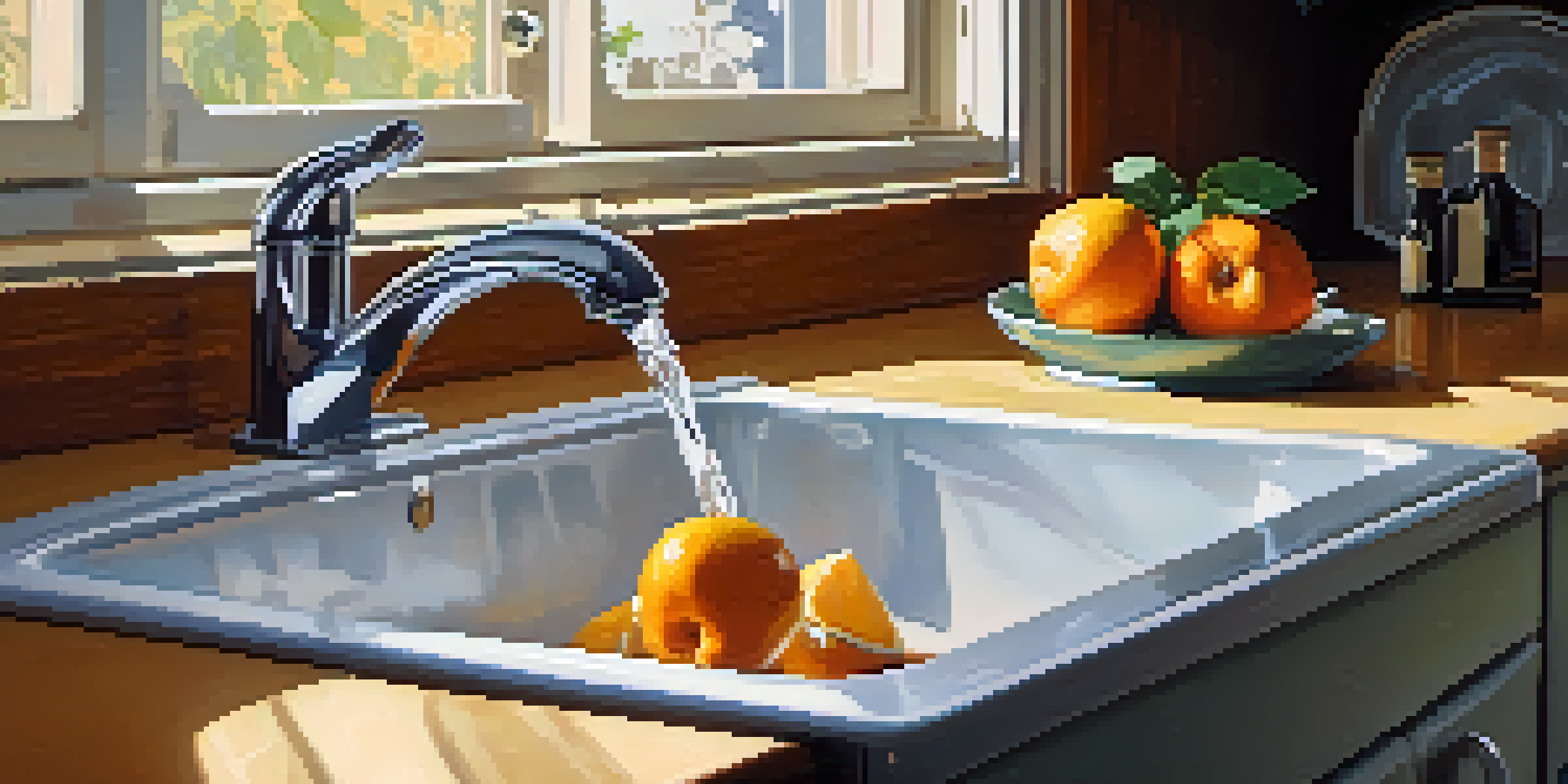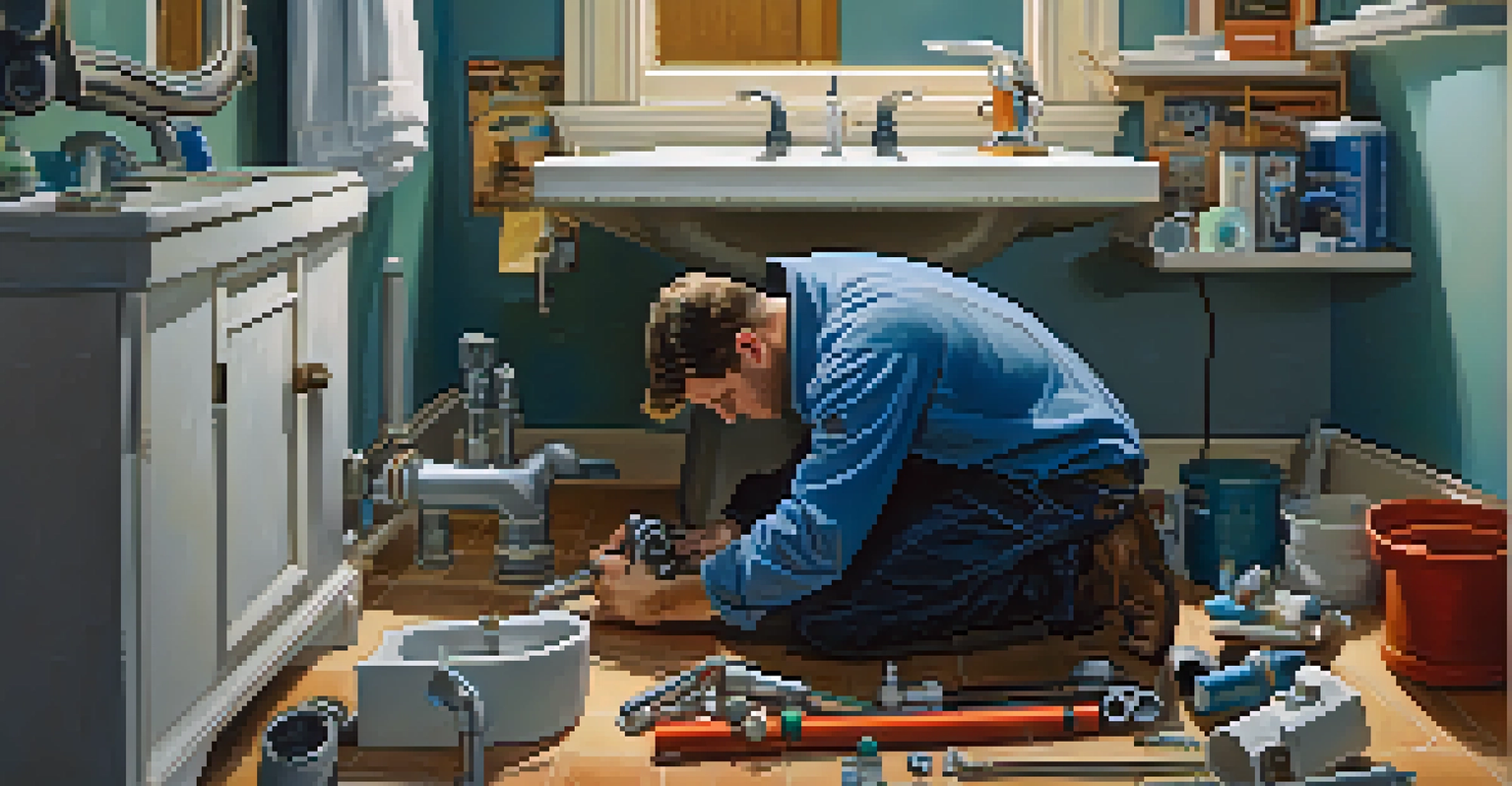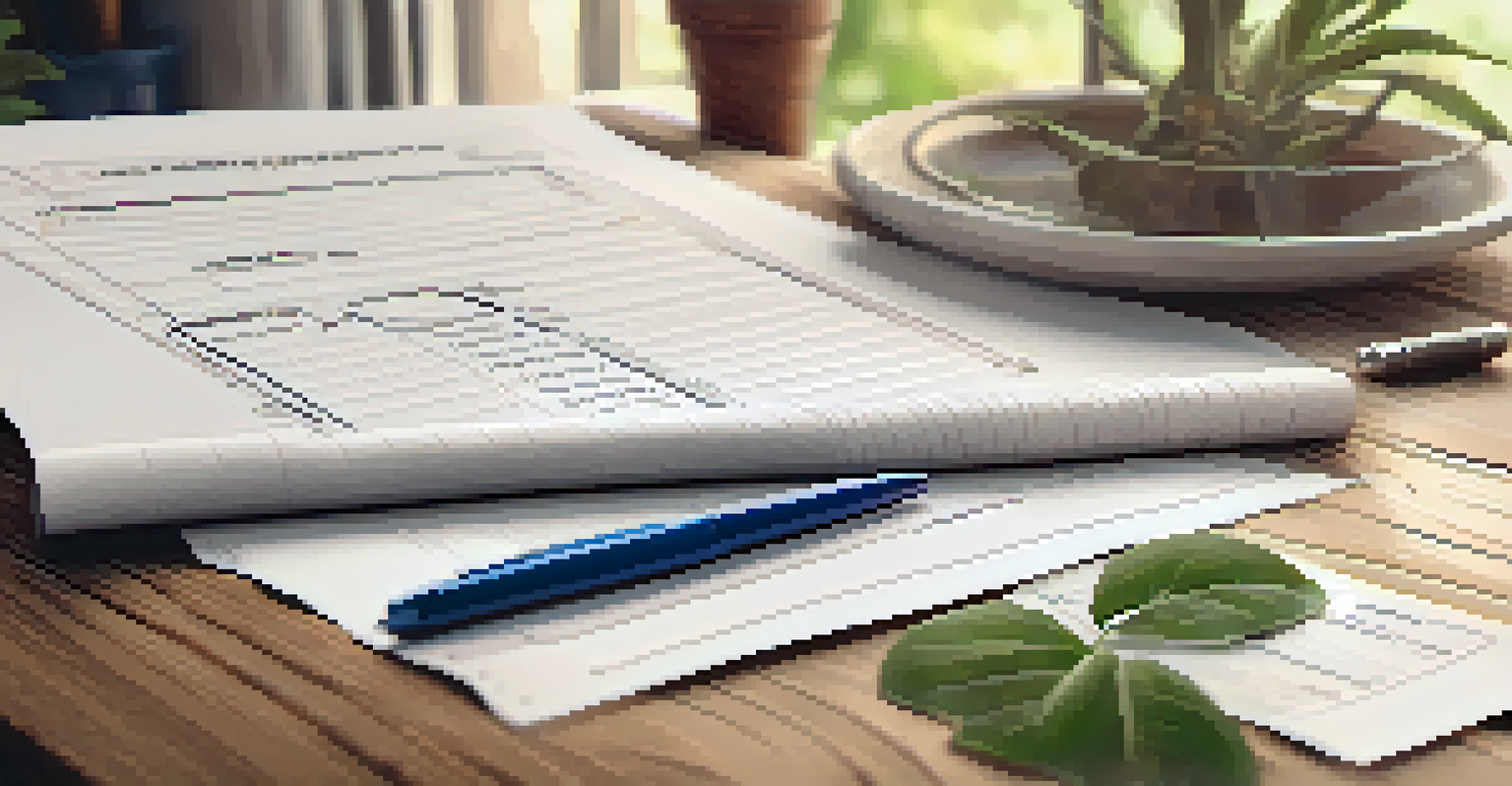How to Address Plumbing Issues Before Inspection

Understand Common Plumbing Issues Before Inspection
Before your inspection, it's crucial to familiarize yourself with the common plumbing issues that can arise. Leaky faucets, running toilets, and clogged drains are just a few examples that can raise red flags during an inspection. These issues, although seemingly minor, can lead to significant problems if left unaddressed.
An ounce of prevention is worth a pound of cure.
Think of plumbing like the veins of your house; if one part is blocked or damaged, it can affect the entire system. For instance, a small leak might be easy to overlook, but it could indicate more serious problems like pipe corrosion. Understanding these common issues can help you identify what to look for and fix before the inspector arrives.
By proactively addressing these plumbing concerns, you not only enhance the value of your home but also ensure a smoother inspection process. Remember, an ounce of prevention is worth a pound of cure, especially when it comes to home inspections.
Inspect Your Pipes and Fixtures for Damage
Start your plumbing prep by thoroughly inspecting the visible pipes and fixtures in your home. Look for any signs of wear and tear, such as rust, corrosion, or water stains, which can indicate leaks. Pay particular attention to areas under sinks, around toilets, and in basements or crawl spaces where pipes may be exposed.

If you notice any issues, consider fixing them yourself if you're handy or calling a professional plumber. Addressing these concerns promptly can save you from potential repair headaches down the road. Plus, a well-maintained plumbing system is usually more appealing to inspectors and potential buyers.
Address Plumbing Issues Early
Identifying and fixing common plumbing problems before an inspection can prevent significant issues and enhance your home's value.
Don't forget to check your water heater and other appliances that rely on plumbing. Ensuring everything is in good working order can give you peace of mind and contribute positively to your inspection results.
Clear Out Clogged Drains and Toilets
Clogged drains and toilets can be a major issue during a home inspection, so it's essential to tackle these problems beforehand. Use a plunger for toilets and a drain snake or chemical cleaner for stubborn clogs in sinks and showers. Clearing these blockages not only ensures proper flow but also prevents any embarrassing moments during the inspection.
The bitterness of poor quality remains long after the sweetness of low price is forgotten.
A simple way to maintain your drains is to perform regular maintenance, like pouring boiling water down your sinks to break down grease or using a mixture of baking soda and vinegar as a natural cleaner. These methods can help keep your plumbing system functioning smoothly and minimize the risk of clogs.
If you find that clogs persist despite your efforts, it may be time to consult a plumber. Persistent drainage issues can indicate deeper problems within your plumbing system that should be addressed before the inspection.
Check for Leaks and Fix Them Promptly
Leak detection is a key part of preparing for a plumbing inspection. Start by checking under sinks and around toilets for any signs of water pooling or dampness. If you find a leak, whether it's a minor drip or a steady stream, it's important to address it as soon as possible to avoid further damage.
Many leaks can be fixed with simple tools and materials, such as replacing washers in faucets or tightening loose connections. For larger leaks, such as those in walls or ceilings, you may need professional help to ensure the problem is resolved correctly.
Inspect Fixtures and Appliances
Thoroughly checking and testing all plumbing fixtures and appliances ensures they function properly and leaves a good impression during inspections.
Remember, a small leak can turn into a big issue if left unchecked, potentially causing damage to walls, ceilings, and even your foundation. Taking the time to fix these leaks before your inspection can save you significant hassle later on.
Test All Plumbing Fixtures for Functionality
Before your inspection, it’s a good idea to test all plumbing fixtures to ensure they are working as intended. Turn on all faucets, flush toilets, and run the shower to check for any irregularities. Pay attention to water pressure, temperature, and any unusual noises that could indicate underlying issues.
If a fixture isn’t functioning properly, it’s best to address the issue before your inspector comes. Sometimes, a simple adjustment or replacement can resolve the problem, ensuring that everything is in working order when it’s time for the inspection.
Having all your plumbing fixtures in good working condition not only helps with passing the inspection but also demonstrates that you care for your home. It makes a positive impression on both the inspector and potential buyers.
Inspect Your Water Heater for Issues
Your water heater is an essential part of your plumbing system, and it’s vital to ensure it’s functioning properly before an inspection. Look for signs of rust or leaks around the unit, as these can be indicators of more significant problems. Also, check the temperature settings to ensure they are within a safe range, typically around 120 degrees Fahrenheit.
Consider flushing the water heater to remove sediment buildup, which can impede efficiency and lead to costly repairs. This simple maintenance step can not only extend the life of the heater but also improve its performance.
Document Repairs for Transparency
Keeping a detailed log of repairs and maintenance showcases the care taken in maintaining your plumbing system, which can be beneficial during inspections.
If your water heater is older or showing signs of wear, it might be worth discussing replacement options with a plumber. A new water heater can be a strong selling point during your inspection and can provide peace of mind.
Know When to Call a Professional Plumber
While some plumbing issues can be addressed on your own, knowing when to call a professional is key. If you encounter persistent problems, such as recurring clogs or leaks, it's best to consult a plumber. They have the expertise and tools to diagnose and fix issues that may be beyond the average homeowner's capabilities.
Don't hesitate to get a professional opinion if you're unsure about the condition of your plumbing system. An experienced plumber can provide valuable insights and may catch problems that you might miss. This proactive approach can save you time and money in the long run.

Ultimately, addressing plumbing issues before your inspection can make a world of difference. Whether you choose to tackle repairs yourself or enlist a professional, taking action now can lead to a smoother inspection process and a better outcome.
Document Repairs and Maintenance for Transparency
As you address plumbing issues, it's wise to keep a record of all repairs and maintenance performed. Documenting these actions provides transparency to potential buyers and inspectors, showcasing the care you've taken in maintaining your home's plumbing system. This can be particularly beneficial if any questions arise about the condition of your plumbing during the inspection.
You can create a simple maintenance log that includes dates, descriptions of repairs, and receipts for any professional services rendered. This log not only helps you keep track of your home's history but also adds value by demonstrating your commitment to upkeep.
Being proactive in maintaining and documenting your plumbing can lead to a smoother inspection process and provide peace of mind knowing you've taken the necessary steps to ensure your home is in top shape.